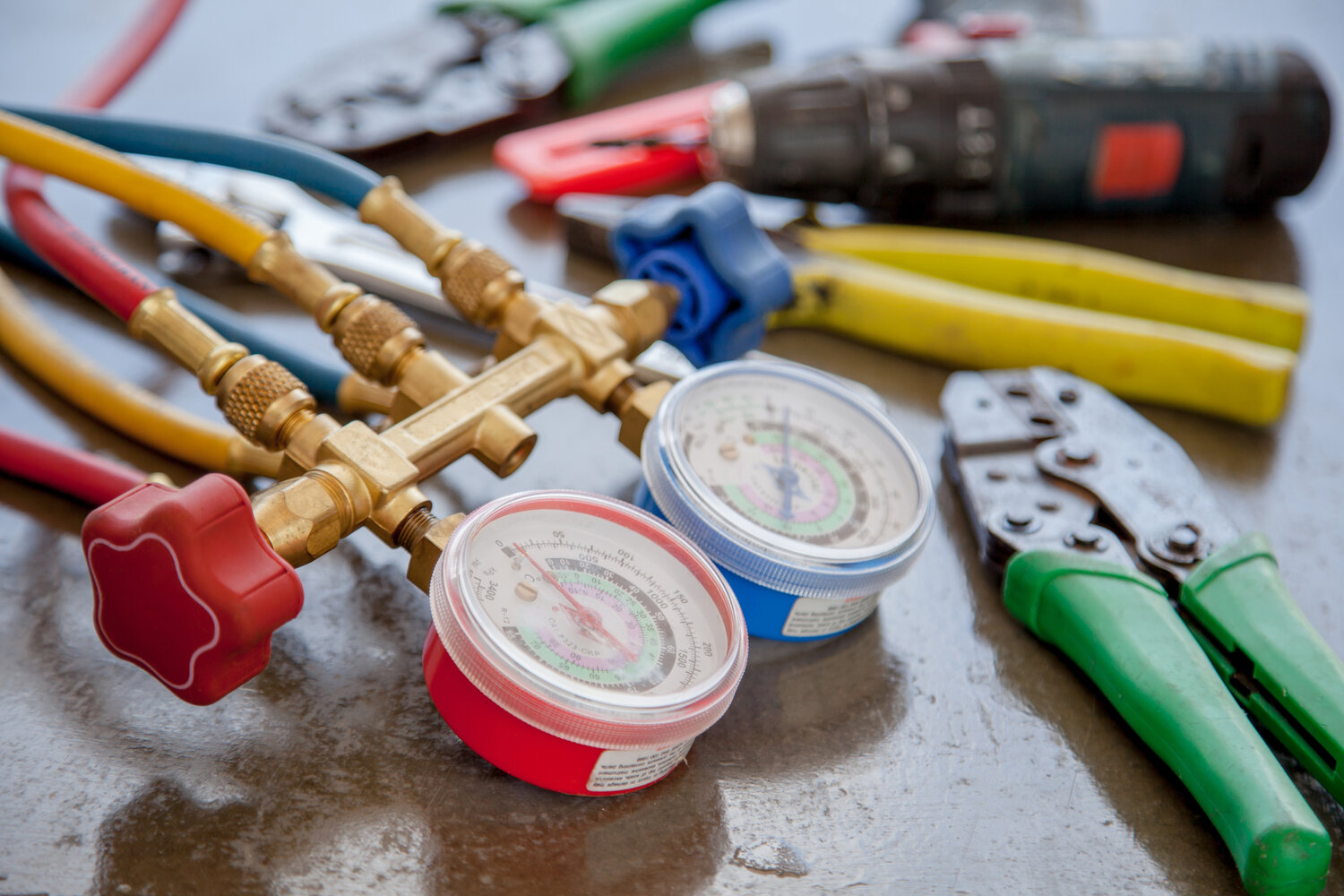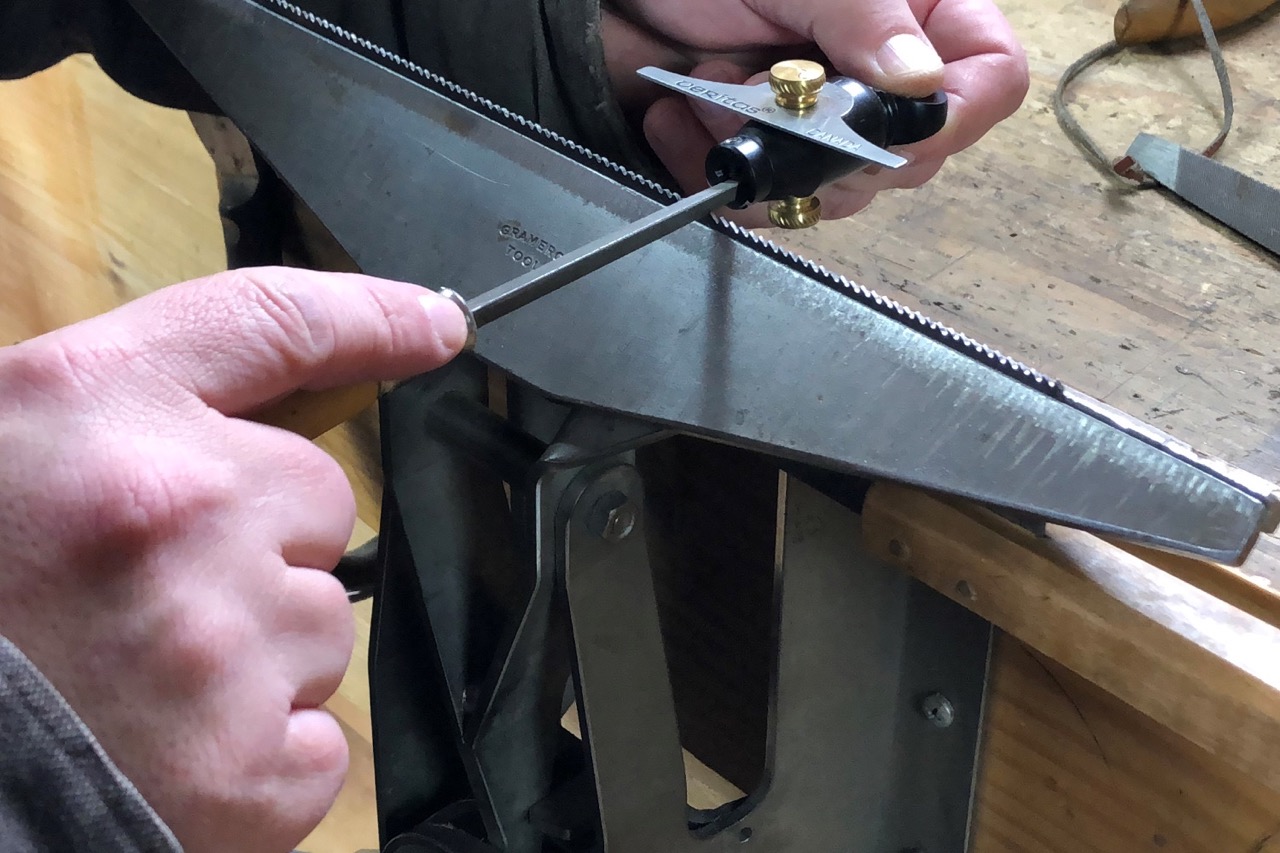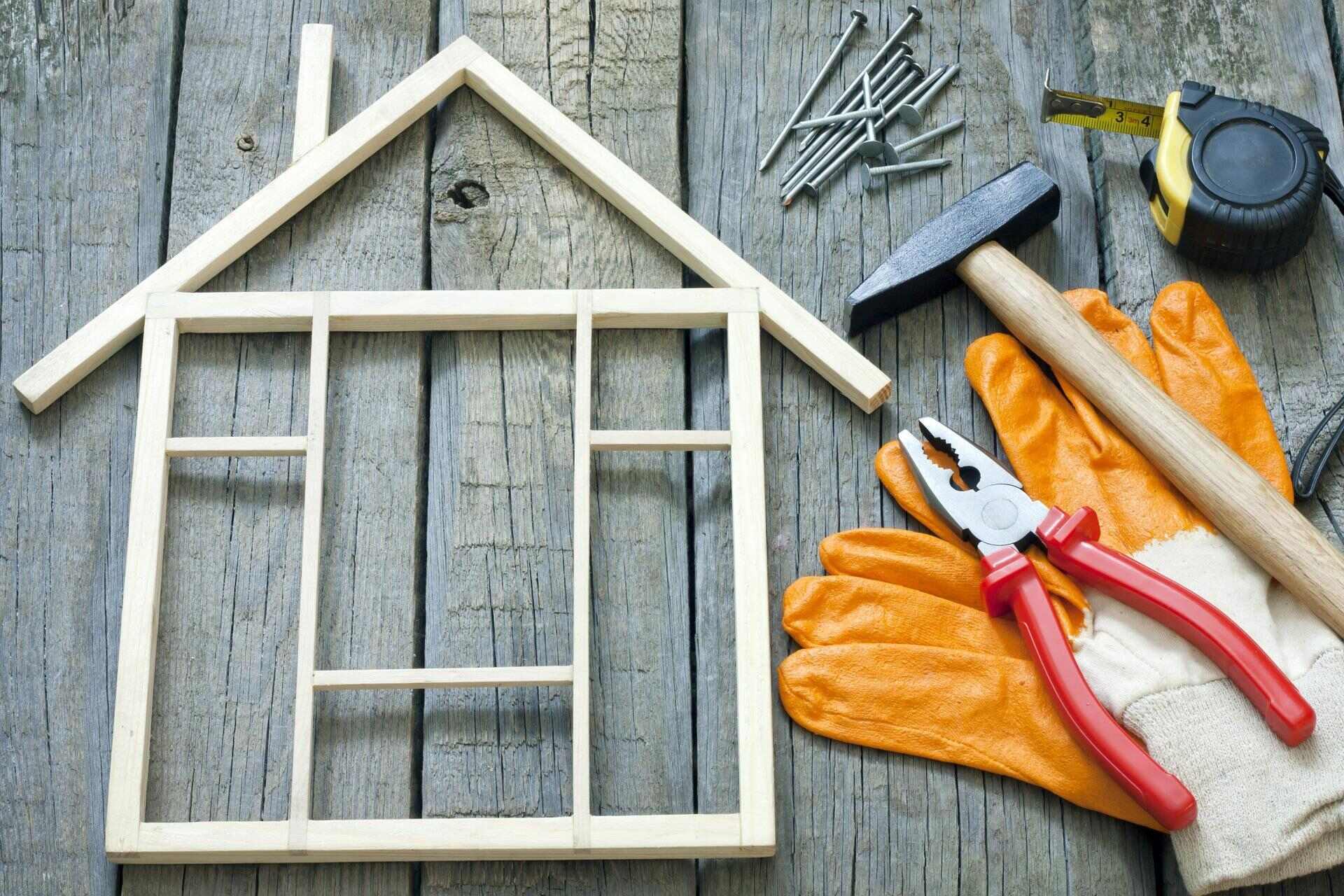

Articles
What Tools Do You Need For HVAC
Modified: March 23, 2024
Discover the essential tools you need for HVAC projects with our informative articles. Get expert advice and tips for a successful installation or repair.
(Many of the links in this article redirect to a specific reviewed product. Your purchase of these products through affiliate links helps to generate commission for Storables.com, at no extra cost. Learn more)
Introduction
When it comes to HVAC (Heating, Ventilation, and Air Conditioning) systems, having the right tools is crucial. Whether you’re a professional HVAC technician or a DIY enthusiast, having the right tools can make all the difference in the world. Not only do they help you diagnose and solve problems efficiently, but they also ensure the safety and effectiveness of your HVAC system.
In this article, we will explore the essential tools you need for HVAC work. From thermostats to refrigerant gauges and vacuum pumps to pipe benders, we will take a comprehensive look at each tool’s function and importance.
So, whether you’re just starting out in the HVAC field or looking to upgrade your tool collection, let’s dive in and discover the must-have tools for HVAC professionals.
Key Takeaways:
- The right HVAC tools, from refrigerant gauges to tube cutters, are essential for efficient system diagnosis and maintenance. Investing in high-quality tools ensures optimal performance and longevity of HVAC systems.
- An organized HVAC tools bag is a must-have for technicians, allowing easy access to essential tools and showcasing professionalism. Safety and proper tool maintenance are crucial for successful HVAC projects.
Read more: What Do You Need In A Tool Box
Thermostats
Thermostats are one of the most critical tools in any HVAC system. They control temperature and allow users to adjust the settings according to their comfort preferences. While basic thermostats have simple temperature control functions, modern digital thermostats offer advanced features like programmable schedules and remote control capabilities.
When selecting a thermostat, consider the compatibility with your HVAC system, the type of power source required (batteries or hardwired), and the user interface. Programmable thermostats are an excellent choice for energy savings as they allow you to set different temperature levels throughout the day, optimizing comfort and efficiency.
When installing or replacing a thermostat, make sure to follow the manufacturer’s instructions carefully. Correct installation ensures accuracy in temperature reading and proper functioning of the HVAC system.
Refrigerant Gauges
Refrigerant gauges, also known as pressure gauges, are essential tools for HVAC professionals to measure and monitor the pressure levels in an HVAC system. They consist of two gauges – a high-pressure gauge and a low-pressure gauge.
These gauges help technicians determine the refrigerant’s state and pressure, ensuring that the system is operating within the recommended range. Improper refrigerant levels can lead to system inefficiency, reduced cooling or heating capacity, and even system failure.
To use refrigerant gauges, the technician connects the gauges to the service valves on the HVAC system. The high-pressure gauge measures the pressure on the discharge side of the system, while the low-pressure gauge measures the suction side pressure. By comparing the readings to manufacturer specifications, technicians can diagnose potential issues with the HVAC system.
Keep in mind that working with refrigerants requires proper handling and certification. Always follow safety guidelines and local regulations when using refrigerant gauges and handling refrigerants.
Multimeters
Multimeters are versatile tools that every HVAC technician should have in their toolbox. These devices are used to measure voltage, current, and resistance in electrical circuits. In HVAC work, multimeters are invaluable for troubleshooting and diagnosing electrical issues.
There are two main types of multimeters: analog and digital. Analog multimeters use a needle to indicate the measurement, while digital multimeters display the values on a digital screen. Digital multimeters are more commonly used due to their accuracy and ease of reading.
With a multimeter, HVAC technicians can perform a range of tasks such as checking voltage levels at different points in the HVAC system, testing continuity in electrical connections, and measuring resistance in components like motors and heating elements.
When using a multimeter, it’s important to set the device to the appropriate range and function to get accurate readings. Additionally, technicians should ensure their own safety by following proper electrical safety procedures and wearing protective equipment when necessary.
Investing in a quality multimeter can save time and effort in troubleshooting electrical problems and ensure proper functioning of the HVAC system.
Pressure Gauges
Pressure gauges are essential tools for HVAC professionals to measure and monitor the pressure levels in various parts of an HVAC system. They provide crucial information about the system’s performance and help diagnose potential issues.
There are different types of pressure gauges used in HVAC work, including compound gauges, differential gauges, and vacuum gauges. Compound gauges measure both positive and negative pressures, while differential gauges are used to measure the difference in pressure between two points in the system. Vacuum gauges, as the name suggests, measure the level of vacuum in the system.
Pressure gauges are typically connected to specific points in the HVAC system using hoses or connectors. By monitoring the pressure readings, technicians can assess the system’s efficiency, check for leaks, and ensure proper refrigerant charge levels.
Correct usage and interpretation of pressure gauge readings require familiarity with the HVAC system and the specific pressure ranges recommended by the manufacturer. Technicians should also be aware of safety precautions when working with pressurized systems.
Having reliable pressure gauges in your HVAC toolkit is essential for accurate troubleshooting and maintenance of HVAC systems.
Read more: What Tools Do You Need To Start Woodworking
Leak Detectors
Leak detectors are essential tools for HVAC technicians to identify and locate leaks in refrigerant lines, coils, fittings, and other components of an HVAC system. Refrigerant leaks can lead to a loss in cooling or heating capacity, increased energy consumption, and potential damage to the system.
There are various types of leak detectors available, including electronic leak detectors, ultrasonic leak detectors, and dye leak detectors. Electronic leak detectors use sensors to detect refrigerant leakages, while ultrasonic leak detectors utilize sound waves to identify leaks. Dye leak detectors involve injecting fluorescent dye into the system and using ultraviolet light to detect leaks.
When using a leak detector, it’s important to follow the manufacturer’s instructions and use proper safety precautions. HVAC technicians should systematically check all potential areas for leaks, including connections, valves, and coils. Locating and repairing leaks promptly can prevent further damage to the HVAC system and ensure optimal performance.
Regularly inspecting for leaks and having a reliable leak detector on hand can help maintain the efficiency and longevity of an HVAC system.
Manifold Sets
Manifold sets are essential tools for HVAC technicians working with refrigeration systems. These sets consist of a manifold gauge, hoses, and valves, and are used to measure and control the flow of refrigerant in the system.
The manifold gauge is equipped with multiple pressure gauges to measure high and low pressures in the refrigeration system. The hoses connect the manifold to the system’s service ports. The valves on the manifold allow technicians to control the flow of refrigerant and isolate specific sections of the system for maintenance or repairs.
Manifold sets are particularly useful when it comes to charging or evacuating the HVAC system. Technicians can monitor the pressure readings on the gauges and adjust the refrigerant flow accordingly to achieve the correct charge. This helps ensure the system operates efficiently and effectively.
High-quality manifold sets are built to withstand the pressures and harsh conditions of HVAC work. It’s crucial to choose a set that is compatible with the refrigerants used in your HVAC system and meets industry standards.
Manifold sets provide a convenient and accurate way to measure pressures, charge refrigerants, perform system diagnostics, and ensure the optimal performance of HVAC systems.
When working on HVAC systems, it’s essential to have a set of basic hand tools including screwdrivers, wrenches, pliers, and a multimeter for electrical testing. These tools will help you perform routine maintenance and troubleshoot common issues.
Vacuum Pumps
Vacuum pumps are indispensable tools for HVAC technicians when it comes to evacuating air and moisture from refrigeration systems. These pumps create a vacuum by removing air, moisture, and contaminants from the system, creating a clean and stable environment for refrigerant charging.
During the installation or repair of an HVAC system, it is crucial to remove any air and moisture from the system to prevent performance issues and potential damage. The vacuum pump pulls a deep vacuum, typically measured in microns, to ensure the system is free of unwanted particles and moisture.
Vacuum pumps are available in different sizes and capacities, suited for various HVAC system sizes and requirements. They are equipped with features like a built-in gauge and an oil-filled reservoir to allow for proper monitoring and lubrication.
When using a vacuum pump, technicians should connect the pump to the system’s service ports and follow proper procedures to create a vacuum. It is essential to check for leaks during the evacuation process to ensure a thorough vacuum is achieved.
Vacuum pumps are a fundamental tool in HVAC work, ensuring the proper functioning and longevity of refrigeration systems.
Tube Cutters
Tube cutters are essential tools for HVAC technicians when it comes to cutting and preparing copper or aluminum tubing in HVAC systems. These tools make precise and clean cuts, allowing for proper fitting and connection of tubes.
There are different types of tube cutters available, including hand-held tube cutters and rotary tube cutters. Hand-held tube cutters are typically used for smaller diameter tubes, while rotary tube cutters are ideal for larger diameter tubes.
Using a tube cutter is a straightforward process. The technician positions the cutter on the tubing, tightens it, and rotates it around the tubing to create a clean cut. Proper technique and pressure are crucial to avoid damaging the tube or leaving rough edges.
Tube cutters are especially important during installation, repair, or replacement of components in HVAC systems, such as condenser coils, evaporator coils, or refrigerant lines. They allow technicians to make accurate cuts and ensure proper connection and sealing of tubes.
Having a reliable tube cutter in your HVAC toolkit ensures efficiency, accuracy, and a professional finish in your HVAC projects.
Read more: What Do You Need For A Kegerator
Flaring Tools
Flaring tools are essential tools for HVAC technicians when it comes to creating flared connections in HVAC systems. Flaring is the process of enlarging the end of a metal tubing to form a flared shape, allowing for a secure and leak-proof connection.
Flared connections are commonly used in HVAC systems for various applications, such as connecting refrigerant lines, gas lines, or oil lines. The flare provides a smooth and even surface for the fittings to seal tightly, ensuring optimal performance and preventing leaks.
Flaring tools typically consist of a flaring block, a clamp, and a flaring bar. To create a flare, the technician positions the tubing in the appropriate size slot in the flaring block, tightens the clamp to hold the tubing in place, and then uses the flaring bar to gradually flare the end of the tubing.
Proper technique and precision are essential when using flaring tools to ensure a consistent and accurate flare. The depth of the flare should be appropriate for the type and size of the tubing being used.
Flaring tools are crucial for HVAC technicians when installing or repairing HVAC systems. They allow for reliable and secure connections, minimizing the risk of leaks and maximizing the system’s efficiency.
Torches
Torches are indispensable tools for HVAC technicians when it comes to soldering and brazing metal components in HVAC systems. Soldering and brazing involve heating two or more metal pieces using a torch and applying a filler metal to create a strong and secure bond.
There are different types of torches used in HVAC work, including oxy-acetylene torches, propane torches, and MAPP gas torches. Oxy-acetylene torches provide a high flame temperature and are commonly used for larger-scale HVAC projects. Propane torches and MAPP gas torches are more portable and versatile, suitable for smaller-scale jobs.
When using a torch, safety precautions are essential. HVAC technicians should wear appropriate protective gear, including heat-resistant gloves, safety glasses, and flame-resistant clothing. They should also ensure proper ventilation in the work area to avoid the buildup of dangerous fumes.
Torches are commonly used in HVAC work for tasks such as soldering copper tubes, brazing HVAC components, and repairing or replacing faulty parts. The ability to create strong and reliable connections is crucial for the proper functioning of HVAC systems.
Having a torch in your HVAC toolbox allows for efficient and effective soldering and brazing, ensuring the longevity and reliability of HVAC installations and repairs.
Pipe Benders
Pipe benders are essential tools for HVAC technicians when it comes to bending metal pipes and tubing to create custom shapes and angles in HVAC systems. These tools allow for precise and accurate bending without compromising the structural integrity of the pipes.
There are different types of pipe benders available, including manual pipe benders, hydraulic pipe benders, and electric pipe benders. Manual pipe benders are operated by hand, while hydraulic and electric pipe benders offer more automated and efficient bending capabilities.
Pipe benders are commonly used in HVAC work for tasks such as bending copper pipes, aluminum tubing, or stainless steel pipes to create curves, angles, or intricate shapes. Custom bends are often required when installing or repairing refrigerant lines, condensate drains, or ventilation ducts.
Proper technique and knowledge of pipe bending principles are crucial when using pipe benders. Technicians must consider factors like pipe size, material, wall thickness, and the desired bend angle to achieve the desired result without kinking or weakening the pipe.
Using pipe benders allows for the creation of clean and precise bends in HVAC systems, ensuring proper flow, efficient operation, and optimal performance.
HVAC Tools Bag
An HVAC tools bag is an essential item for HVAC technicians to organize and transport their tools conveniently. It functions as a portable toolbox that allows technicians to carry their necessary tools while on the job.
The size and design of an HVAC tools bag can vary, but they typically feature multiple compartments and pockets to accommodate various tools and accessories. Some bags may have adjustable dividers or removable trays to customize the organization of tools based on individual needs.
An organized tools bag helps technicians stay efficient and productive by ensuring that all their tools are easily accessible when needed. It minimizes the time spent searching for tools and increases the overall workflow.
When selecting an HVAC tools bag, consider the size and durability of the bag, as well as the number and types of compartments or pockets. Look for a bag with sturdy handles or a comfortable shoulder strap for easy transportation.
A well-stocked and organized HVAC tools bag should include the essential tools mentioned earlier in this article, such as thermostats, refrigerant gauges, multimeters, pressure gauges, leak detectors, manifold sets, vacuum pumps, tube cutters, flaring tools, torches, pipe benders, and other tools specific to your HVAC work.
An HVAC tools bag ensures that technicians have all the necessary tools within reach for efficient HVAC installation, repairs, and maintenance. It keeps tools protected, organized, and easy to transport, making the job more streamlined and professional.
Read more: What Do You Need For A Picnic
Conclusion
Having the right tools is crucial for HVAC professionals to effectively install, maintain, and repair HVAC systems. Each tool serves a specific purpose and contributes to the overall efficiency and performance of the HVAC system.
In this article, we have explored several essential tools for HVAC work, including thermostats, refrigerant gauges, multimeters, pressure gauges, leak detectors, manifold sets, vacuum pumps, tube cutters, flaring tools, torches, pipe benders, and the importance of an HVAC tools bag.
These tools enable HVAC technicians to diagnose problems, accurately measure and monitor various parameters, make precise cuts and connections, create custom shapes, and ensure proper functioning and performance of HVAC systems.
When selecting HVAC tools, it is essential to consider factors such as compatibility, quality, and safety features. Investing in high-quality tools and maintaining them properly will enhance both the efficiency of your work and the longevity of your tools.
Remember to follow safety guidelines, including wearing protective gear and adhering to proper procedures when using tools such as torches or working with refrigerant gauges.
Having a comprehensive arsenal of HVAC tools and keeping them organized in an HVAC tools bag will not only make your work more efficient but also showcase professionalism and dedication to your craft.
So, whether you are an HVAC professional or a DIY enthusiast, having the right tools will equip you to handle HVAC projects with confidence and ensure the optimal performance and comfort of HVAC systems.
Frequently Asked Questions about What Tools Do You Need For HVAC
Was this page helpful?
At Storables.com, we guarantee accurate and reliable information. Our content, validated by Expert Board Contributors, is crafted following stringent Editorial Policies. We're committed to providing you with well-researched, expert-backed insights for all your informational needs.













0 thoughts on “What Tools Do You Need For HVAC”